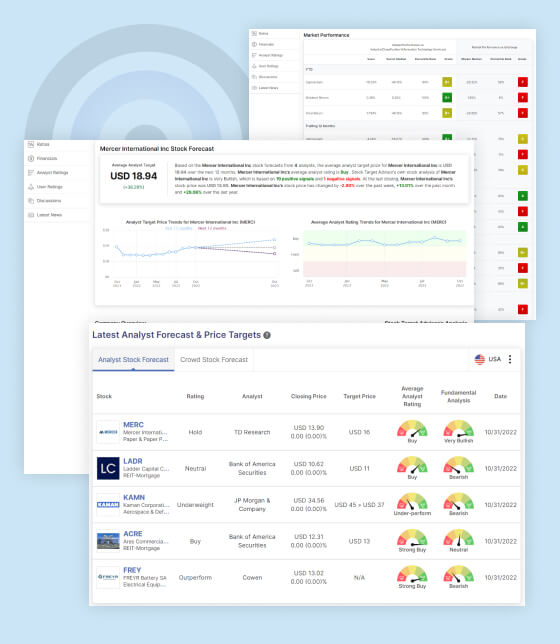Trending Stocks Ticker by Stock Target Advisor
Economic Growth Forecasts
The IMF’s latest projections for economic growth in 2024 reveal a diverse landscape of growth rates around the world. Many of the fastest-growing economies are concentrated in Asia and Sub-Saharan Africa, known for their robust economic expansions. Here are some key takeaways from the IMF’s GDP growth forecasts for 2024:
- Asia and Sub-Saharan Africa Dominate: The list of fastest-growing economies for 2024 is dominated by countries from Asia, particularly Southeast Asia and India, as well as several nations from Sub-Saharan Africa. These regions have been consistently experiencing strong economic growth in recent years.
- Macao SAR Leads: Macao SAR, an autonomous region of China, is projected to have the highest GDP growth rate at 27.2%. This exceptional growth is partly driven by its tourism and gaming industry, which has seen a resurgence.
- Guyana in the Americas: Guyana, located in South America, stands out as the fastest-growing economy in the Americas, with a projected growth rate of 26.6%. This is largely attributed to the country’s burgeoning oil and gas sector.
- Diversity in Africa: Sub-Saharan African nations, such as Niger, Senegal, Rwanda, Côte d’Ivoire, and others, feature prominently on the list. Their growth is driven by a combination of factors, including agriculture, infrastructure development, and increased trade.
- Global Average: The global average GDP growth rate for 2024 is estimated at 2.9%, indicating that, on average, the world’s economies are expected to experience modest growth. This is partly due to various factors, including economic uncertainties and structural challenges in some regions.
For Western economies, these forecasts carry both opportunities and challenges. On the one hand, they highlight the potential for Western companies to tap into the growth of these rapidly expanding markets by increasing exports and investments. This can boost economic activity and create opportunities for Western businesses.
However, Western economies may also face competitive pressures from these fast-growing nations. With expanding domestic markets and industries, these countries may become more competitive on the global stage, potentially impacting Western exports and market share. Additionally, Western economies must adapt to changing global trade dynamics and ensure that their policies and businesses are agile enough to navigate these shifts.
Impact on G7 Countries
The impact of the shift in global economic growth is complex and varies across different countries and regions. While some G7 economies may face challenges as a result of this shift, it’s essential to note that they will not necessarily be “hit the worst” uniformly. Several factors come into play, including the specific strengths and weaknesses of each economy, their trade relationships, and the adaptability of their industries. Here are some G7 economies that may face challenges in response to the growth shift:
- United States: The United States, as the largest economy within the G7, faces both opportunities and challenges. While it can benefit from expanding markets in Asia and Africa, it also faces competition in key industries and must ensure its businesses remain globally competitive.
- United Kingdom: The UK, in the post-Brexit era, is navigating a changing landscape in its trade relationships. It may need to adjust its trade strategy and diversify its trading partners to mitigate potential economic challenges.
- Canada: Canada’s economy is closely tied to the United States, which presents both opportunities and vulnerabilities. Diversifying trade relationships beyond North America may be crucial for sustained growth.
- Germany: Germany, a major export-oriented economy, relies heavily on global trade. Shifting economic dynamics in Asia and Africa may require it to adapt its export strategies and explore new markets.
- France: France faces similar challenges and opportunities as other G7 economies. It needs to maintain its competitiveness in key sectors while expanding trade relations with rapidly growing markets.
- Italy: Italy’s economy may need to address internal structural issues and promote innovation to remain competitive. Developing stronger ties with fast-growing economies can stimulate growth.
- Japan: Japan has been adapting to global economic changes for years. The country’s aging population poses demographic challenges, but its technological advancements and innovative industries can help maintain competitiveness.
Growth Outlook
The IMF’s GDP growth forecasts for 2024 indicate a world where economic power and influence are shifting, with Asia and Sub-Saharan Africa emerging as key growth drivers. Western economies should be attentive to these developments, seeking opportunities for collaboration while remaining adaptable to evolving global economic dynamics.

STA Research (StockTargetAdvisor.com) is a independent Investment Research company that specializes in stock forecasting and analysis with integrated AI, based on our platform stocktargetadvisor.com, EST 2007.





























